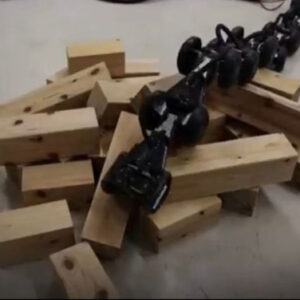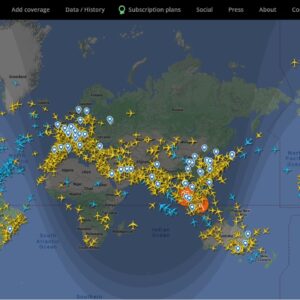
Snake robot to help search for earthquake survivors
Searching for earthquake survivors is one of the most difficult and complex rescue operations, and all possible animals and tools are used to help reach people under the rubble.
Rescuers previously relied on mice and cockroaches equipped with small cameras, especially since they are able to enter places that cannot be seen or even heard sounds asking for help.
robot
In addition, experts turn to technology to assist them in their searches. Among them is the snake robot developed by researchers led by Motoyasu Tanaka of the University of Electrical Communication in Tokyo. It is a snake-shaped robot that can climb high stairs and navigate through narrow spaces. According to Al Arabiya Net.
The 1.7-meter (5.5-foot) long “snake” has 17 joints with distance sensors, Tanaka said, by which the robot can tell if each of its wheels is on the ground or suspended in the air.
The researchers hope to use the device within 3 years, after conducting further research to improve the robot’s ability to fix its position in the event of sudden movements during disaster rescue missions.
Marches
In addition to the snake robot, rescuers are turning to drones to identify survivors, as the drone system can separate the living from the dead by detecting a slight movement of the victims’ chests.
Engineers from UniSA University in South Africa and the Intermediate Technical University in Baghdad designed a computer vision system that can distinguish survivors from dead bodies at a distance of 4-8 meters, using new technology to monitor vital signs remotely.
As long as the human upper body is visible, the cameras can capture subtle movements in the chest cavity, which indicate heart rate and breathing. And unlike previous studies, the system does not depend on changes in skin color or body temperature.
Professor Javan Chahel and Dr Ali Al-Naji, the study leaders, made global headlines in 2017 when they first demonstrated that a camera on a drone could measure heart and respiratory rates.
Finder
New technology from the US Space Agency (NASA) also managed to rescue 4 emergency workers who were trapped under the rubble of the Nepal earthquake in 2015, by detecting their heartbeat.
Two pilot units of this system were sent to Nepal in the days after the April 25 earthquake. The unit is called Personnel Search for Disaster and Emergency Response and is known as FINDER.
The Finder unit is the size of a handbag and is powered by a lithium battery. It sends out low-energy microwaves. The waves can detect subtle movements, such as a slight pulsation of the skin that detects a heartbeat. These waves can travel up to 30 feet. 9 meters) in piles of rubble or 20 feet (6 meters) in solid concrete.
One of the advantages of Finder, compared to microphones and other traditional search and rescue tools, is that the person does not have to be conscious to find it, a pulse suffices.





Comments (0)